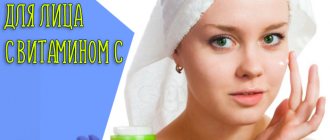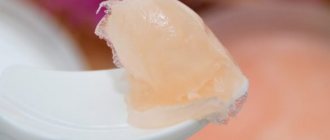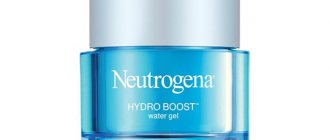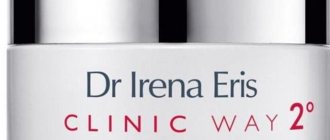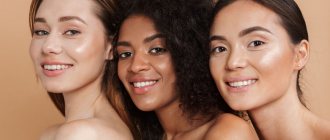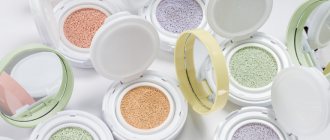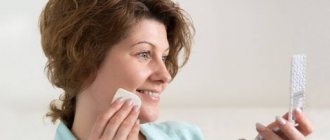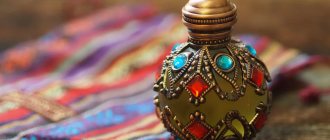When exposed to oxygen, metal rusts and our bodies literally decompose. Reactive oxygen species (oxidants, free radicals) “corrode” us from the inside, destroying us at the cellular level. They steal our health, youth, beauty.
The only weapon against these aggressors is antioxidants. Our body produces them independently. But there are additional sources: food and cosmetics (and this is where modern food and cosmetic manufacturers hit the jackpot).
We understand how antioxidants fight with oxidants inside us, and how we can influence the outcome of the battle.
What are antioxidants for?
We all know about the benefits of vitamins and microelements for the skin. What are antioxidants? Often these are the same vitamins, microelements and some other substances. But they were combined into a group to focus on one very specific ability, on which the youth and beauty of our face depends.
This is the ability to fight dangerous oxidation of the cells of our body, which is carried out by reactive oxygen species (free radicals). After all, what is oxidation? This is, in essence, destruction. Our body is destroyed at the cellular level, which provokes all kinds of diseases and premature aging.
Antioxidants are literally “anti-oxidants.” They neutralize oxidants (oxidizing agents), blocking our internal “rotting”.
Some antioxidants are produced by the body itself, and some come from food and cosmetics. If you are young, healthy, physically active and selective in food, then all this oxidative chaos is not scary for you. But most of us need extra antioxidant support.
Let's first figure out what exactly we need to fight.
but on the other hand
Who said that free radicals are necessarily bad? Free radicals are not always a dangerous byproduct of metabolism - many processes in the body cannot do without them: immune cells use free radicals to neutralize bacteria, viruses and cancer cells. Does this mean that excessive consumption of artificial antioxidants will lead to disruption of these functions?
As it turns out, yes: Long-term studies have shown that taking beta-carotene, vitamin A and vitamin E increases the likelihood of lung cancer and mortality in smokers and those who worked with asbestos. Women who took supplements with vitamins C, E, beta-carotene, selenium and zinc were more likely to develop skin cancer, and men taking vitamin E increased their risk of prostate cancer. To date, the danger of biological antioxidant additives remains one of the few fully proven effects.
Antioxidant dietary supplements interact with medications: vitamin E enhances the effect of blood thinners, increasing the likelihood of bleeding, and antioxidants can reduce the effectiveness of anti-cancer therapy - therefore, during drug treatment, consultation with your doctor is required before taking any medications or dietary supplements.
In addition, under certain conditions, antioxidants can also act as oxidizing agents: they take away electrons from other molecules, turning them into free radicals.
***
Physiological processes in the body are interdependent, interfering with this fragile system without indications is dangerous: there is no clear evidence of the benefits of antioxidants, but there is convincing evidence of the dangers of taking dietary supplements containing them. A healthy diet provides the body with all the necessary microelements, vitamins and antioxidants without any health risks.
Photo: unsplash.com/Towfiqu barbhuiya, Magalie De Preux, Vedrana Filipović; pexels.com/Nataliya Vaitkevich, cottonbro
What are free (secondary) radicals
Free radicals (oxidants, oxidizing agents) are atoms, molecules or ions that carry an unpaired electron in their outer orbit. What does it mean? The fact that they have a vacant place, and they strive to take away the missing electron from other compounds. They oxidize everything they touch.
Oxidation is the loss of electrons by an atom or molecule upon contact with free radicals.
Oxidative reactions are processes that occur continuously in us. And to a certain extent, the activity of oxidants is useful and necessary. Free radicals are involved in many vital processes: energy exchange, fight against microbes, hormone production, protein formation, etc.
But at some point, oxidants become dangerous. In which? When their number begins to exceed the norm. Then they transform into ruthless aggressors, destroying everything in their path. They destroy molecules and cells, including proteins, lipids and other vital compounds. They “tear” DNA and cause cell mutations. In general, they create chaos - so-called oxidative stress.
All this leads to disease, premature aging and affects our appearance. The list of diseases that are associated with harmful oxidative effects includes cancer, diabetes, asthma, multiple sclerosis, diseases of the heart, blood vessels, joints, etc.
And the reason for such destructive overactivity of free radicals is negative external factors: ultraviolet radiation, cigarette smoke, dirty air, poor diet, contact of the skin and respiratory tract with household chemicals. Frequent stress significantly reduces the body's antioxidant resources.
According to scientists, the norm is if about 5% of substances that arise during chemical reactions in the body are oxidants. Such free radicals, which we need to fight pathogens and for other physiological processes, are considered primary.
Alas, an excess of oxidants is inevitable and destructive. Those “extra” free radicals that no longer play a physiologically beneficial role, but only cause harm, are called secondary.
Destructive oxidation in the body grows like a snowball. The secondary free radical, which has taken away someone else’s electron, seems to “calm down” and become inert. But in fact, he passes the baton to the molecule that he just deprived of an electron. She herself has now become a free radical, already a tertiary one. Therefore, she is looking for another victim to take away the electron from her. This is no longer such a fierce “robber”; she may not have enough strength, but even at this level there is a destructive effect.
If you do not fight the raging oxidants, they will take into circulation even those molecules that previously were always “inactive” and did not enter into chemical reactions.
Free radicals are usually called “reactive oxygen species,” but this name does not exhaust all their varieties. In addition to oxygen, derivatives of nitrogen, chlorine, and lipids take active form.
How does oxidative (or oxidative) stress affect the skin?
When, under the influence of negative external and internal factors, the balance of the oxidative and reductive systems is disturbed towards oxidation, a large number of radicals are formed in the skin, participating in lipid peroxidation. This leads to damage to nucleic acids, cellular proteins and lipids. Such processes have an extremely negative effect on the condition of the epidermis and its functions. Ceramides are damaged - lipid molecules, which are the main building component of the outer layers of the skin, forming a lipid barrier (protecting the skin from dehydration, peeling, irritation, penetration of foreign substances, etc.).
By oxidizing lipids, free radicals provoke a lack of moisture, inflammatory reactions, and the risk of developing bacterial infections and pollution. As a result, damage to the cell membranes of the epidermis and dermis may occur, which will weaken the protective function of the skin and may cause the formation of various cosmetic defects. Proteoglycans and hyaluronic acid are destroyed (which accelerates skin aging).
In addition, free radicals destroy the skin framework, damaging collagen and elastin fibers and preventing their synthesis. (Oxidized collagen molecules become free radicals and bind to each other, forming dimers: the so-called “cross-linked” collagen is formed, less elastic and resistant to the action of enzymes.) As a result, the firmness and elasticity of the skin suffers, wrinkles are easily formed, and tissue ptosis appears.
To prevent (or promptly eliminate) such consequences, doctors recommend maintaining a healthy lifestyle: this includes physical exercise, healthy sleep, avoiding stressful situations, limiting alcohol and quitting smoking, protection from excessive ultraviolet radiation (it is recommended to use products with SPF during the active sun season -protection). In addition, it is important to monitor your diet: it must be properly balanced.
Nina Vitalievna Levushkina, brand technologist at PLEYANA:
“A well-balanced diet will contain adequate amounts of vegetables and fruits. It is recommended to include sea fish and cold-pressed vegetable oils. All this is necessary to replenish the supply of vitamins E, C, A, F, bioflavonoids, coenzyme Q10 and other antioxidants important for the body.”
Also, to protect and restore healthy skin functions, today there is a wide range of cosmetics containing various types of antioxidants.
Types and benefits of antioxidants
The power of antioxidants is that they neutralize free radicals and thereby prevent harmful oxidation.
They:
- eliminate the destruction of cell membranes and prevent cell death,
- stimulate the restoration of damaged tissues,
- rejuvenate,
- increase vitality in general.
Depending on the source of entry into the body, three types of antioxidants can be distinguished:
- Antioxidants that our body produces on its own.
Our own antioxidants are biologically active substances in the form of hormones and enzymes, as well as vitamins. We have different ones, each type of dangerous free radicals has its own. Estrogens, catalase, superoxide dismutase, glutathione peroxidase, coenzyme Q, vitamins A, C, E, etc.Our own antioxidants are the basis for preventing free radical oxidation from destroying us from the inside.
They are enough to fully combat oxidants if you lead a healthy and active lifestyle and have minimized the impact of negative factors on the body (sun, smoking, poor environment, stress, sugar and other junk food, etc.).
But still, over time and due to negative external influences, the body develops a deficiency of its own antioxidants. It needs to be replenished.
- Antioxidants in food.
Represented by vitamins, microelements, acids, flavonoids and other compounds. Most of them are found in berries, vegetables, fruits, herbs, nuts, and oils. Antioxidants are included in dietary supplements in concentrated doses. - Antioxidants in cosmetics.
There are:- Natural.
Their sources are mainly the same foods that we eat, especially vegetable oils. - Synthetic.
In the modern cosmetics industry, many analogues of natural antioxidants are synthesized, but they are not comparable in effectiveness to plant ones.
Important!
No cosmetics will help if antioxidants are poorly produced from within. Start your transformation by working through the internal causes of skin aging. MelAnnett's Grow Marathon is for you.
Myths about antioxidants
It is believed that these components are scarce in the diet. This is not entirely true. If a person's diet is poor and he eats mostly fast food, then there may not be enough antioxidants. If the menu contains a lot of vegetables and fruits, and occasionally drinks good wine, then there will be enough antioxidants.
One type of antioxidant is enough to fight the aging process. Best used in pairs or groups. By extinguishing the negative effects of radicals, the antioxidant goes into a non-working state and another group of elements helps it work. Even if a cosmetic contains only one active substance, it usually does not have the desired effect.
If cosmetics contain a lot of antioxidants, then they are very useful. This is wrong. It is better if there are several of these components and they are in low concentration. If the cream is too saturated with beneficial substances, then they can turn into pro-oxidants, and produce a negative effect.
Antioxidants in food
An increased content of oxidants in the body is a death sentence for most of us. It is difficult for humanity to hide from this.
The modern world is far from environmental standards. We inhale and eat a lot of “harmful things”. Our skin is attacked by dangerous radiation, dirty air, and hard water.
And we ourselves exhaust our own bodies with poor nutrition, bad habits and endless stress.
Therefore, most of us need additional sources of oxidants. And the main channel is nutrition.
If you ask the Internet which antioxidants are best to take with food, the first thing they will offer you is dietary supplements (dietary supplements).
Be careful with them!
If you are healthy, then you do not need dietary supplements and medications containing antioxidants. They contain a very high dosage of active substances. Scientists believe that this causes a withdrawal effect after stopping taking the drugs. Your own natural antioxidant capabilities may drop sharply.
Our body is also a pragmatist. He won’t work if some “pills” do it for him. He will refuse to resist dangerous oxidation on his own, and a kind of addiction will form.
And this was proven in experiments on animals that were fed antioxidants in large quantities. Yes, their fight against free radicals improved, but only during a special “diet”. Then their own antioxidant abilities dropped to below normal levels.
Instead of taking dietary supplements, reconsider your diet. Load up on foods that are rich in antioxidants. They contain such concentrations of active components that are suitable for humans, and not for Argentinosaurus.
Antioxidants: protecting cells from destruction
The human body is equipped with a multi-level system of protection against the destructive effects of harmful radicals. It is called the antioxidant system, or AOS. The components of this body's defense system are called antioxidants.
Antioxidants are natural or synthetic substances that can slow down or stop the oxidation process of organic compounds. At their core, antioxidants are also radicals (particles with a missing or extra electron) that are ready to react with “harmful” radicals in order to break (or slow down) the oxidation chain.
The mechanism of action of the main part of antioxidants is as follows: antioxidant molecules interact with active radicals (which leads to the formation of low-active radicals) or destroy intermediate reaction products (as a result of which oxidation slows down, as the rate of formation of free radicals decreases). So, the main task of antioxidants is to break branched chain oxidation.
This is done in two ways. In the first, an antioxidant molecule containing a mobile hydrogen atom interacts with an active particle - a radical leading the oxidative chain - and oxidizes it, resulting in the formation of a low-active radical. Derivatives of secondary aromatic amines and phenols work according to this principle. In the second method, the antioxidant molecule reacts with the intermediate oxidation product, which leads to its decomposition and chain branching, thereby forming a stable compound. This is how organic derivatives of phosphites and sulfides act.
There are three main levels of antioxidant protection in the body: anti-oxygen (prevents “electron leakage” in mitochondria), anti-radical (prevents the formation of radicals) and anti-peroxide (protects cell membranes and enzyme systems of the cell).
A whole complex of enzymes is involved in the work of AOS, among which superoxide dismutase, catalase, peroxidase, and various reductases (glutathione reductase, methionine sulfoxide reductase, diascorbate reductase, etc.) are especially well known. In addition to enzymes, AOS also includes a number of cell metabolites: lipoic, ascorbic and uric acids, the tocopherol family, about 500 carotenoid compounds, flavonoids, polyphenols (4000–5000 compounds), urates and others. Also directly related to the protective system are: the amino acid taurine, the dipeptide carnosine, the catabolism product of heme-containing proteins - bilirubin, melatonin (a multifunctional antioxidant, one of the pineal gland hormones). Often, individual components of AOS work in synergy, enhancing each other’s actions (the process of studying this kind of interaction continues).
The discovery of antioxidants and their first use were associated with an attempt to preserve food for a longer period of time. After the war, the food problem was acute in the Soviet Union: scientists had to solve the pressing issue of extending the service life of products in order to avoid their spoilage. Research by B.N. Tarusov in the 1950s showed that changes in the surface properties of butter are the result of lipid peroxidation. Then vitamins (including E and C) began to be added to products to protect against oxidation. In 1961, biophysicist A.I. Zhuravlev discovered antioxidant activity in living organisms.
There is no uniform classification of antioxidants. However, they are usually divided:
- by molecular structure: they distinguish enzymes (superoxide dismutase, catalase, peroxidase, phospholipase, etc.) and organic compounds with non-enzymatic activity, which are macromolecular (melatonin, transferrin, cerruloplasmin, ferritin, serum albumin) and low molecular (ascorbic acid, glutathione, urea, bilirubin, sulfur-containing amino acids, adrenaline, steroid hormones, some vitamins, ubiquinone, flavonoids, some types of trace elements);
- according to the ability to act in the aqueous or lipid phase: polar (water-soluble) and non-polar (fat-soluble);
- by localization of action in cellular structures: membrane, intracellular and extracellular.
Antioxidants also differ in their mechanism of action:
- “scavengers” - react with all free radicals and neutralize them, restoring them to stable forms;
- “traps” - have an affinity for certain substances with which they react;
- “antioxidants that break biochemical chains” are substances that are even more active than free radicals: by reacting with the latter, these antioxidants make the radicals weakly active.
According to the classification of antioxidants according to A.V. Kudrin and O.A. Gromova (Russian scientists who have published a number of works on the role of microelements in medicine), they can be endogenous (originally present in the body) and exogenous (coming from the outside).
The first include:
- enzymes: superoxide dismutase (SOD) – zinc-, copper- and manganese-dependent, glutathione peroxidase, glutathione-S-transferase, etc.;
- metabolites: glutathione-GSH (oxidized and reduced), glutathione cell cycle, ubiquinone Q10.
The second ones include:
- vitamins and provitamins: alpha-, beta-, gamma-carotenes, vitamin A, retinoids, alpha-tocopherol (vitamin E), phylloquinone (vitamin K), vitamin C, rutin;
- plant substances: ubiquinone (coenzyme Q10), quercetin, polyphenolic compounds, catechins, chlorophylls, pigment complexes, glycosides, essential oils, bioflavonoids, gallic acids, thiol compounds;
- antioxidant cofactors: riboflavin, vitamin B6, pantothenic acid, omega-3, omega-6;
- trace elements: selenium, zinc, cobalt, manganese;
- medications.
We can conditionally distinguish three levels of antioxidant protection of the skin: surface (membrane or barrier protection), extracellular and intracellular.
Surface protection is located in the upper layers of the skin and is the first stage of protection against harmful factors (mainly acting from the outside). These include large amounts of fat-soluble beta-carotene, alpha-tocopherol and squalene.
Extracellular – implies protection mainly of the intercellular space from damage. It includes: alpha-tocopherol, vitamin C, glutathione, superoxide dismutase, glutathione peroxidase (containing selenium), catalase.
Intracellular protection contains all types of antioxidants. It is carried out due to fat-soluble antioxidants located in the cell membrane (structural component - lipids) and water-soluble antioxidants (located in the cell membrane and membranes of its organelles in those areas where free radicals are formed and where they come into contact with the cell (outer cell membrane). One of the water-soluble antioxidants in this protection is tripeptide glutathione (its concentration here is much higher than other antioxidants).
The most powerful antioxidants
What do we eat to increase the level of antioxidants in the body?
Products that contain:
- Ubiquinone (coenzyme Q10).
With the discovery of this enzyme, the triumphant march of antioxidants in biomedicine begins. - Flavonoids.
Many of them are pigments that give color to plants. Once in the human body, they stimulate the functioning of enzymes. Contained in dark grapes (in the form of resveratrol), green tea (tannin), red berries (anthocyanins), red onions (quercetin), peel and white partitions of citrus fruits (rutin), etc. - Vitamins A (retinol), C (ascorbic acid), E (tocopherol), K, N (alpha-lipoic acid).
- Microelements: selenium, magnesium, etc.
- Glutathione
(amino acid derivative), - Lycopene
(a pigment that is responsible for the color of a number of fruits).
What are these products:
- Spices and seasonings: cloves, oregano, rosemary, cinnamon, turmeric.
- Bran.
- Herbs: thyme, mint, basil, cilantro, nettle, parsley.
- Berries: rose hips, cranberries, honeysuckle, blackberries, blueberries, strawberries, blueberries.
- Legumes: beans, lentils, beans, soybeans.
- Nuts: pecans, walnuts, hazelnuts, pistachios, almonds.
- Fruits: prunes, plums, pomegranate, dates, citrus fruits.
- Vegetables: onion, garlic, artichoke, ginger, asparagus, radish, beets, broccoli, eggplant, spinach, Brussels sprouts, bell pepper.
What are antioxidants
Antioxidants are molecules that fight oxidative processes in the body caused by free radicals.
The latter are solid, liquid or gaseous unstable particles. They are formed as a result of metabolic processes or enter the body from the outside, for example, with exhaust gases. Oxidation causes cell damage; some of them can be restored, others are destroyed forever. In this case, free radicals perform important functions [1]. Immune cells use them to fight infections [2]. Factors that increase the production of free radicals:
- internal inflammation;
- contaminated air;
- excessive exposure to ultraviolet radiation;
- cigarette smoke.
Antioxidants in cosmetics
“Antioxidants” is one of the most powerful marker words in the arsenal of cosmetic industry marketers. Add it to the description of a cosmetic product, and consumer interest in the product will immediately jump.
It is believed that our internal antioxidants reach the skin as a residual. First, they rush to improve health, maintain the functioning of internal organs, and then the integument gets what is left.
Therefore, it is recommended to supply the skin with additional portions of antioxidants from the outside. Especially if you have it:
- age,
- problematic, prone to rashes,
- exposed to insolation,
- with discoloration.
That is, cosmetics containing antioxidants are a must-have not only for women 30+. These are products for any age. They are needed by teenagers with their acne, and by young women to prevent aging, by everyone who sunbathes, etc.
Antioxidants in cosmetics protect skin cells from damage and slow down the aging process. Healthy young cells “grow”, collagen production (elasticity) increases, and photoaging is minimized.
The main functions of antioxidants in cosmetics:
- Anti-aging:
stimulates cellular regeneration, increases turgor and elasticity, slows down the formation of wrinkles. - Fighting acne and eliminating traces of it.
- Improved complexion and reduced pigmentation.
- Protection from aggressive external factors:
hyperinsolation, cold, wind, dirty air. - Healing of wounds and abrasions, recovery after burns.
Types of antioxidant cosmetics
It is important to use antioxidants not only in the form of cosmetics, but also to include them in the diet. But after forty years, the concentration of active substances entering the body decreases. Therefore, their level should be maintained with cosmetics. Manufacturers produce tonics, masks, lotions. Active substances are added to creams and serums.
It is recommended to use antioxidant cosmetics if the production of melatonin and glutathione is impaired. With glutathione deficiency, a person begins to develop skin pigmentation. In cosmetics, manufacturers use astaxanthin, which is many times more powerful than green tea or coenzyme Q10. You can also often see lipoic acid on product labels, which improves metabolic processes. Antioxidant cosmetics include a liposomal form of vitamin C and coenzyme Q10, which promotes collagen production.
List of the best antioxidants
What to look for on a cosmetic product label:
- vitamin C
(Vitamine C, ascorbic acid, L-ascorbic acid, ascorbyl palmitate/ tetraisopalmitate/ glucosamine, tetrahexyldecyl ascorbate), - vitamin E
(tocopherol, alpha-tocopherol, tocotrienol + the same names in Latin), - vitamin B3
(vitamin PP, nicotinic acid, niacin, niacinamide, nicotinamide + the same names in Latin), - carotenoids
(red and orange plant pigments + their synthesized analogues): vitamin A, beta-carotene, retinol, retinyl palmitate, lycopene + the same names in Latin, - polyphenols
(blue and green plant pigments): resveratrol (red grapes, blueberries, cranberries), tannin (green tea), proanthocyanidin (grapes, blueberries, pine bark), pycnogenol (French pine, witch hazel, grape seed), silymarin (milk thistle) , caffeine (Arabica coffee tree), pomegranate extract (pomegranate), - superoxide dismutase
(enzyme of animal, microbial, plant origin), - microelements:
selenium, magnesium, etc., - ubiquinone
(coenzyme Q10, coenzyme Q10, CoQ10) + its synthetic analogue idebenone, - alpha lipoic acid
(alfa lipoic acid, ALA, thioctic acid, vitamin N, berlition, lipamide)
When to use antioxidant cosmetics
Cosmetics containing active substances are necessary if the skin is often exposed to the negative effects of ultraviolet rays. They are used if aging begins, a person has a lot of stress, or there are inflammatory processes. At the same time, synthesized antioxidants are less useful than natural substances. The most effective ingredients are considered to be pine bark extract, red grapes, ginkgo biloba, horse chestnut, and sea buckthorn. Doctors also recommend products with rosemary, green tea and witch hazel.
How to choose cosmetics with antioxidants
It is better to stick to cosmetics with natural antioxidants. They are more efficient and reliable than their synthesized “clones”.
Therefore, it is optimal to choose natural cosmetics, free from “chemicals”.
Vegetable oils contain a record amount of antioxidants
.
Even elemental sunflower oil
is rich in vitamin E, a strong protector against oxidants.
But for the face it is better to choose something more cosmetic. Not necessarily expensive exotics. There are affordable and effective oil options: coconut, hemp, argan, apricot, peach, jojoba, shea butter, grape seed
.
More rare oils are camellia sasanqua, marulu, karanji, buriti
.
Other types of cosmetics that are made from plant materials also fight oxidants: creams, balms, serums, squalane, hydrolates.
It is believed that the sources of the most powerful antioxidants are plants from regions with harsh climates: Siberian larch, sage, mint, rose hips
.
Anti-aging components in cosmetics. Part 1: Antioxidants to protect youth
Hello beauties! The treasured inscription “anti-age” so excites the hearts of women. But is such a manufacturer’s promise always justified? Or sometimes this is just another marketing ploy hiding behind this to play on the delicate feelings of the fair half of humanity? My attempt to figure this out is below the cut. Those interested are welcome.
Instead of an introduction
The idea of writing this post has been in my mind for a long time. But, realizing that the topic would require processing a large amount of information, I could not muster the courage to start. I’ll say right away that my goal was not to present the post as the opinion of an authoritative source, but simply to make a convenient reminder that one could look into on occasion. Or a starting point from which to start when plunging into the anti-aging “wilds”.
I think this post will be primarily of interest to people like me: those who have recently started using anti-aging cosmetics or are just thinking about it. To those who have considerable experience in the difficult struggle against old age, we have only one request: share your general impressions about the effectiveness of using anti-age products (and, ideally, give tips on worthy brands)
We're done with the lyrics, let's get down to business. I have already written in other posts that analyzing the composition of cosmetic products for ordinary people is a thankless task. Only a specialist can evaluate all the nuances. However, simple logic dictates that if a manufacturer positions its product as anti-age, then at least one component with the corresponding effect should be there. Of course, covering the entire list of ingredients is a difficult task, so I tried to select the most effective and/or known ingredients that have been proven to be effective in scientific research.
As for the selection of cosmetic products in the examples, this is more of a hint than a guide to action, since when choosing, one must, of course, be guided by the full composition, manufacturer’s recommendations and the individual characteristics of the skin.
So let's get started. The post turned out to be voluminous, so be patient))
Antioxidants in anti-aging care
The first part of my gigantic post will be dedicated to antioxidants. In order not to overload with theory, briefly and to the point: Let's remember chemistry. A molecule in a “healthy” state has paired electrons. When an electron loses its pair, the molecule becomes a free radical, which tries to compensate for the loss by stealing electrons from “healthy” cells, thereby starting a chain reaction that leads to cell damage (and faster aging). To prevent this from happening, the free radical must be “pacified” and the missing atom must be returned to it. This is precisely the task that antioxidants are designed to perform.
Source
The body produces free radicals naturally (and copes with them on its own) or under the influence of other unfavorable conditions: stress, chronic diseases, poor environment, aging, etc. An excess of free radicals triggers the process of lipid oxidation (lipids are the basis of cell membranes), which ultimately leads to damage to skin cells. A young body has good antioxidant protection, but with age it weakens. Therefore, there is a need to support this system from the outside and, in particular, to nourish the skin with antioxidants included in cosmetics.
Antioxidants in cosmetics work. This is proven by numerous scientific studies. While many cosmetics work only on the surface, the action of antioxidants is directed “inward”: to protect cells from damage. However, you should not expect an immediate effect from them, like from injections or alginate masks. Antioxidants provide a cumulative effect, inhibiting irreversible aging processes. So you should use cosmetics with antioxidants regularly. When choosing a cosmetic product, give preference to products that have long-term contact with the skin (creams, serums) rather than washable products. Antioxidants take time to be absorbed into the skin.
So, if you find antioxidants in a cosmetic product, what you should pay attention to: - it is believed that antioxidants have a better effect if they act in pairs/groups, so that the presence of one single antioxidant will have less effect than the presence of several complementary components . - Antioxidants generally work great in small concentrations, so just because you see an antioxidant at the end of the ingredient list doesn't mean it is. Often, increasing concentration can only have the opposite negative effect.
Many natural oils and extracts have an antioxidant effect. As part of this post, I made a selection of fairly powerful antioxidants that are most often found in anti-age cosmetics.
Alpha Lipolyic Acid
(Alpha Lipoic Acid): a powerful antioxidant to protect youthful skin.
Enhances the effect of vitamins C and E (accordingly, we look for the presence of the entire group, or at least a couple, in the compositions). Helps increase skin elasticity, as it prevents collagen and elastin fibers from connecting. It has the property of narrowing pores, so it is often included in oily skin care products. Examples of funds:
— Derma E, Firming DMAE Moisturizer — Moisturizing cream for skin elasticity — Derma E, Firming Serum with DMAE, Alpha Lipoic and S-Ester — Firming serum — Aubrey Organics, Revitalizing Therapy Night Cream with Alpha Lipoic — Night cream “Chilean Rose” with Alpha Lipoic Acid – Reviva Labs, Alpha Lipoic Acid, Vitamin C Ester & DMAE Cream – Reviva Labs, Antioxidant Skin Smoothing Day Cream – Source Naturals, Skin Eternal Day Cream – White Egret Personal Care, Hyaluronic Acid Day Serum with Alpha Lipoic Acid – Hyaluronic Acid Day Serum - Aroma Naturals, Vitamin C Lotion, Amazing, A&E - Devita, DMAE & Alpha Lipoic Acid - Natural skin care for optimal rejuvenation
Argan oil
(Argania Spinosa (Argan) Oil): a powerful antioxidant, contains a lot of vitamin E. Perfectly nourishes dry skin.
Examples of funds:
— Weleda, Granatephel Aktive Regeneration Day cream — Lifting with pomegranate — Sanoflore, Creme Merveilleuse — Magic cream enriched — Nuxe, Reve de Miel — Day cream — comfort for the face — Dr.Haushka, Regeneration Hals and Dekolletecreme — Regenerating cream for neck and décolleté — Andalou Naturals, Hyaluronic DMAE Lift & Firm Cream — Lifting cream with hyaluronic acid — Aubrey Organics, EveryDay Basics Moisturizer for normal/dry skin — Moisturizer for normal and dry skin — Melvita, Bio-Excellence Serum Hydratant — Moisturizing serum — Noreva , Matidiane: Anti-Shine Day Treatment - Facial care against oily shine - Decleor, Intense Nutrition Aromessense Marjolaine - Nourishing night balm
Acai berry extract
(Euterpe Oleracea Fruit Extract): powerful antioxidant protection against photoaging, improved complexion.
The acai berry is the fruit of a palm tree that grows in the Amazon River Delta. The composition contains proteins, carbohydrates, B vitamins, beta-kerotene, lipids, microelements, Omega-6 and Omega-9 fatty acids, etc. Examples of products:
— Payot, My Payot Jour — Day cream with superfruit extracts — Andalou Naturals, Acai & White Tee Oil-Free Moisturizer — Oil-free moisturizer — Acure Organics, Pore Minimizing Facial Scrub — Pore-tightening facial scrub — Giovanni, Detox System purifying facial mask — Cleansing face mask
Tocopherol (Vitamin E)
(Tocopherol): powerful antioxidant, protects skin from premature aging.
Protects against pigmentation after exposure to UV rays. It is effective in combination with other antioxidants, especially when paired with vitamin C. In cosmetics it exists in different forms (Tocopherol, Alpha-Tocopherol, Tocotrienol). It is found in large quantities in many natural oils. Examples of funds:
— Nuxe, Reve de Miel — Nourishing lip balm — Dior, Hydra Life Pro-Youth Skin Tint — Moisturizing anti-aging tinted cream — Now Foods, Hyaluronic Acid Creme — Cream with hyaluronic acid that restores skin moisture — L'Occitane Immortelle — Divine Immortelle — Sanoflore, Regard Merveilleux — Eye contour cream Magic look — Mason, Natural Collagen Beauty Cream — Collagen cream — Sierra Bees, Lip Shimmer — Tinted lip day balms — Reviva Labs, 5% Glycolic Acid Cream — Cream with 5% Glycolic acid — Andalou Naturals, Pumpkin Honey Glycolic Mask — Glycolic mask with pumpkin and honey
Vitamin A
Retinol (the “chemical” name for vitamin A) is perhaps one of the most controversial components.
On the one hand, this is one of the most effective components in anti-age products, with proven effectiveness. On the other hand, if the dosage is not observed, it is unsafe and toxic, and can give side effects in the form of irritation, peeling, etc. You could write an entire dissertation about retinol and the retinoid family, but since this post is not dedicated to them, I will briefly give basic information. Vitamin A is produced in the human body and is formed from beta-carotene (a precursor to vitamin A). Derived forms of vitamin A are called retinoids. Retinoids include more than two thousand components. Vitamin A stimulates cells to actively divide and work well. Moreover, it acts not on the surface, but in the deep layers of the skin, which explains its effectiveness. Retinol is good as an anti-aging and anti-acne component, improves skin tone, and fights pigmentation. Vitamin A can only affect cells in the form of tretinoin (retinoic acid), that is, this is its “active” form. For everyone else, vitamin A derivatives must be converted to tretinoin in the skin to have an effect. Some products (which are most often prescribed by a specialist and should be used only as prescribed by a dermatologist) contain tretinoin in its pure form. The action of such drugs is faster and more “harsh”. In skin care cosmetics, “milder” forms of vitamin A are usually used, which act more slowly and “gently”, but also have a much lower likelihood of side effects. Cosmetic products with retinol should be introduced into your care gradually (especially if you have sensitive skin) and start with a minimum concentration, gradually increasing the frequency of use and concentration if necessary. Naturally, a higher concentration gives a greater effect, however, it has been proven that retinol is effective even at a concentration of 0.01%. It is better to use products with retinol at night, as it is easily oxidized and destroyed under the influence of UV rays. As for the anti-aging effect, today retinol and retinoids, according to many studies, are one of the best remedies for fighting wrinkles. However, it should be remembered that products containing vitamin A and its derivatives should be used wisely. Now let me give you the two most common forms of vitamin A in cosmetics:
1. Retinol (Vitamin A)
(Retinol (Vitamin A): the most common form in cosmetics.
Examples of funds:
— Vichy, Lift Active filler — wrinkle filler — Natura Siberica, Lifting eye serum with Cladonia snow extract — Lierac, Coherence — Eye contour skin lifting cream — La Roche-Posey, Redermic R — Redermic R eye cream — Holy Land , Alpha-beta Restoring Cream - Restoring cream - Devita, Revitalizing Eye Lift Creme - Eye lifting cream
2. Retinyl palmitate (or retinol palmitate)
(Retinyl Palmitate): ester of retinol and palmitic acid. It is 20 times weaker than retinol, has a milder effect, and therefore can be used on sensitive skin.
Examples of funds:
— Dior, Creme de Rose — Lip balm — Yves Rocher, Inositol Vegetal — Day cream Total radiance — Payot, My Payot Jour — Day cream with superfruit extracts — Lierac, Mesolift — Radiance-Tone cream — Derma E, Hydrating Eye Creme with hyaluronic acid - Moisturizing eye cream with hyaluronic acid - LibreDerm Aevit, Nourishing face cream - Dr.Sea, Anti-wrinkle facial cream SPF 25 - Anti-wrinkle face cream SPF 25 - Lumene, Bright Now Vitamin C Night cream - Night cream with vitamin C – Clinique, Superbalm Lip Treatment – Lip care balm
Vitamin C
Our body does not synthesize Vitamin C on its own, which is why it is so important to get it from the outside.
Vitamin C is a powerful antioxidant; it increases the protective function of the skin, enhances the effectiveness of sunscreens, stimulates collagen synthesis, prevents age-related pigmentation, gives the skin radiance, and fights acne. It can be present in cosmetics in various forms, differing in effectiveness and stability. When choosing cosmetics with vitamin C, you should remember that it can cause an allergic reaction, especially on sensitive skin. Therefore, it is better to start using products with a low concentration of vitamin C, especially since it works effectively in this quality. It is most effective in cosmetics in combination with vitamin E. I will list several popular vitamin C derivatives.
1. Aminopropyl Ascorbyl Phosphate:
stable form of vitamin C. Powerful antioxidant, stimulates collagen synthesis. Whitens and prevents pigmentation. Suitable even for sensitive skin. Penetrates the skin much better than ascorbic acid. The effectiveness is scientifically proven.
Examples of products (Aminopropyl Ascorbyl Phosphate):
— Darphin, Predermine — Firming anti-wrinkle serum — Clinique, Repairwear Laser Focus — Intensively restoring serum — Estee Lauder, Resilience Lift — Day lifting cream that increases elasticity — La Mer, The Eye concentrate — Eye contour concentrate
2. Ascorbyl Glucoside:
Vitamin C stabilized with glucose. Powerful antioxidant, stimulates collagen synthesis, reduces age spots, protects from the sun.
Examples of products (Ascorbyl Glucoside):
— L'Occitane, Immortelle — Divine Cream Immortelle — Lancome, Genifigue — Cream for the skin around the eyes “Youth Activator” — Clarins, Eclat du Jour — Cream that gives radiance to the skin — La Roshe — Posay, Hydraphase Intense — Moisturizing serum — Ahava, Cream Rejuvenating moisturizing SPF 20 - Vichy, LiftActive - Tightening anti-wrinkle cream for the eye contour - Gatineau, Age Benefit - Integral Regenerating Eye Cream - Regenerating eye cream - Clinique, Even Better - Moisturizing cream correcting skin tone SPF 20 - Clarins, Multi-Intensive — Revitalizing day cream for all skin types
3. Ascorbyl Palmitate:
stable form of vitamin C. Powerful antioxidant, stimulates collagen synthesis, moisturizes. A non-acidic form of vitamin C, therefore it is quite gentle on the skin. It is better to use cosmetics with palmitates at night, since in this form vitamin C stimulates the synthesis of free radicals under the influence of solar radiation.
Examples of remedies (Ascorbyl Palmitate):
— Chanel, Hydra Beauty Creme — Moisturizing cream radiance and protection — Lavera, 24h Moisturi Moisturizing cream “Wild Rose” — Logona, Night cream Witch Hazel Bio — Guinot, Beauty Neuve — Renewing anti-aging cream — Lumene, Bright Now Vitamin C — Day cream that gives radiance SPF 15 – D'Oliva, Olive-Almond Care Day Cream
4.Magnesium Ascorbyl Phosphate:
A stable and gentler non-acidic form of vitamin C that is suitable for sensitive skin. Powerful antioxidant, stimulates collagen synthesis. Effective in low concentrations. Moisturizes, reduces pigmentation
Examples of products (Magnesium Ascorbyl Phosphate):
— Clinique, Moisture Surge — Long-lasting intensive moisturizing gel — Shisheido, Bio-Performance — Super restorative eye contour cream — Dr.Sea, Anti Wrinkle facial Cream SPF 25 — Anti-wrinkle face cream SPF 25 — Holy Land, C The Success Cream — Cream with vitamin C — Shisheido, Future Solution LX — Cream for complex skin renewal — Lierac, Coherence L.IR — Intensive lifting cream — Andalou Naturals. Probiotic C Renewal Cream - Restoring probiotic and vitamin C cream - Clinique, Even Better - Skin tone correcting moisturizer SPF 20 - The Body Shop, Moisture White Serum Overnight - Triple action night serum
5. Sodium Ascorbyl Phosphate
: A stable and gentler form of vitamin C, suitable even for sensitive skin. Reduces pigmentation, stimulates collagen synthesis.
Examples of products (Sodium Ascorbyl Phosphate)
— Payot, My Payot Jour — Day cream with superfruit extracts — Natura Siberica, Day cream with mattifying effect — Lierac, Magnificence — Gel cream Day and Night — Annemarie Borlid, Rose Dew — Moisturizing facial toner — Murad, Sheer Luster Day Moisture — Anti-aging moisturizer — Derma E, Evenly Radiant Brightening Toner — Skin brightening toner — Holy Land, The Success Eye Cream — Intensive eye cream — Mad Hippie, Vitamin C Serum — Vitamin C Serum — Klairs, Rich Moist Soothing Cream — Moisturizing soothing cream
6.
Ascorbyl Tetraisopalmitate:
stable and mild form of vitamin C. Powerful antioxidant, stimulates collagen synthesis, lightens pigmentation. Suitable even for sensitive skin.
Examples of remedies (Ascorbyl Tetraisopalmitate):
— Caudalie, Polyphenol C15 — Antioxidant serum — Payot, Techni Liss Active — Deep wrinkle smoother — REN, Radiance Perfection Serum — Skin radiance serum — Annemarie Borlind, Intensive care capsules — Korres, Wild Rose 24-H Moisturizing brightening cream — Moisturizing cream 24 hours with wild rose for oily skin - Nuxe, Nuxuriance - Day cream against loss of elasticity - Faberlic, Air Stream - Eye cream Oxygen radiance - Tony Moly, Tomatox Magic White Massage Pack - Whitening tomato mask - Uriage Depiderm - Emulsion against age spots
7.
Ascorbic Acid:
a powerful antioxidant, stimulates collagen synthesis, prevents age-related pigmentation. At low pH it acts as AHA acids.
Examples of products (Ascorbyl Acid):
— Guinot, Longue Vie Cellulaire — Rejuvenating cream “Long cell life” — Avalon Organics, Vitamin C Renewal — Renewing cream with vitamin C — Shisheido, Intensive Anti-Spot Serum — Serum against uneven skin tone — Holy Land, Alpha Complex Rapid Exfoliator — Alpha complex peeling – Clarins, Multi-Active Serum – Serum stimulating cell renewal – Lumene, Arctic Aque Deep Moisture Face Cream – Intensive moisturizing cream – La Prairie, Cellular Swiss Ice Crystal eye cream – Anti-aging eye contour cream – Clinique, All about eyes rich - Cream for skin care around the eyes - Ahava, Time to Treat Facial Renewal Peel - Soft exfoliating product for the face
Acerola extract
(Malpighia Punicifolia (Acerola) Fruit Extract): a powerful antioxidant in age-related care.
Acerola (Barbados cherry) contains antioxidant vitamins and polyphenols and is the richest source of vitamin C in the world. Examples of funds:
— Dr.Hauschka, Regenerating Day Cream — Regenerating day cream — Dr.hauschka, Regenerating Eye Cream — Regenerating eye contour cream
Grape seed extract
(Vitis Vinifera (Grape) Seed Extract): Powerful antioxidant, protects skin from free radicals.
The use of grape seed extract in anti-aging cosmetics helps stabilize the production of elastin and collagen. The ability to neutralize the harmful effects of free radicals in grape seed extract is 10 times higher than that of vitamins E and C in their pure form. Examples of funds:
— Estee Lauder, DayWear — Antioxidant cream — Yves Rocher, Cure Solutions — Anti-Fatigue facial care “Vitality 24 hours” — Decleor, Excellence — Complex rejuvenating night cream — Mizon, Night Repair Seruming Ampoule — Night active-regenerating serum — Mad Hippie, Skin Care Production Face Cream 12 Actives — Face cream with 12 active ingredients — Devita, Revitalizing Eye Lift Creme — Eye lifting cream — Reviva Labs, Varicose Vein Lotion with Vitamin P — Preventive anti-varicose lotion — Nature's Gare, Have a Vine Day – Moisturizing Day Cream with Chardonnay Extract – Andalou Naturals, Cleansing Gel, Citrus Kombucha, Clarifying
Algae Chlorella
(Chlorella Vulgaris Extract): prevents the destruction of collagen and elastin, stimulates their synthesis.
Examples of funds:
— Acure Organics Day Cream Gotu Kola Stem Cell + 1% Chlorella Growth Factor — Day cream with Gotu Kola stem cells + 1% chlorella growth factor — Shisheido Benefiance WrinkleResist24 — Anti-wrinkle day cream 24 hours SPF 15 — La Prairie Anti-Aging Day Cream SPF 30 - Anti-wrinkle protective day cream - Clinique Repairwear Uplifting - Restoring skin firmness day cream SPF 15 Dry skin - La Mer The Regenerating Serum - Regenerating serum - Melvita Bio-Excellence - Firming eye cream
Pomegranate extract
(Punica Granatum (Pomegranate) Extract): Slows down photoaging thanks to catechins (powerful antioxidants).
Also contains tannins, which help tighten pores. Examples of funds:
— Reviva Labs Pomegranate/Lactic Acid Exfoliant — Herbal scrub with pomegranate, lactic acid and pectins — Andalou Naturals 1000 Roses Body Lotion — Soothing body lotion “1000 roses” — Dr.Sea Anti Wrinkle facial Cream SPF 25 — Anti-wrinkle face cream SPF 25 — Korres Pomegranate Moisturizing cream-gel — Light balancing cream with pomegranate for oily skin — The Skin House Saekom Pomegranate cream — Face cream with pomegranate extract — The Face Shop Pomegranate and Collagen Volume Lifting Cream — Lifting cream with pomegranate extract and collagen
Coenzyme Q10
(Ubiquinone): Excellent antioxidant for skin.
Slows down the aging process, prevents the loss of hyaluronic acid. Accelerates collagen synthesis and prevents the destruction of elastin fibers. Examples of funds:
— Holy Land, Probiotic Balancing Cream — Soothing cream with probiotic complex — Avalon Organics, CoQ10 Repair Facial Serum — Anti-wrinkle serum — Andalou Naturals, Resveratrol Q10 Night Repair cream — Night repair cream — Lavera, Basis Sensitiv — Moisturizing face cream Q10 — Natura Siberica, Rejuvenating lifting cream for neck and décolleté - Source Naturals, Skin Eternal Day Cream - Now Foods, CoQ10 Antioxidant Serum - Coenzyme Q10 with antioxidant serum - Acure Organics, Cell Stimulating Facial Mask - Facial mask restoring cells - Mizon, Night Repair Seruming Ampoule - Night active restorative serum
Camellia sinensis (Green tea) extract
(Camellia Oliefera Leaf Extract): Powerful antioxidant.
It has an anti-inflammatory effect, suitable for sensitive skin to relieve irritation and redness. Multiple studies support its effectiveness in protecting collagen from breakdown and protecting against UV rays. Examples of funds:
— Now Foods, Hyaluronic Acid Firming Serum — Firming serum with hyaluronic acid — Clarins, Multi-Hydratante, Moisturizing cream-gel for normal and combination skin — Estee Lauder, Idealist Pore Minimazing Skin Refinisher — Pore tightening serum — Clinique, Moisture Surge — Intensive long-lasting moisturizing gel - Derma E, Hydrating Eye Creme with Hyaluronic Acid - Moisturizing eye cream with hyaluronic acid - Bioderma, Sensibio - AR Sensibio Cream - Avalon Organics, Vitamin C Renewal - Renewing cream with vitamin C - Dr.Haushka, Eye Revive Refreshing compresses - Relieving eye fatigue - Shisheido, Future Solution LX - Cream for comprehensive skin renewal
Arabica coffee extract
(Coffea Arabica Extract): contains caffeine, which is a powerful antioxidant.
Its activity is superior to green tea, pomegranate extract and vitamins C and E in their pure form. Protects against photoaging, reduces pigmentation, increases skin elasticity with regular use. Examples of funds:
— Estee Lauder, Nutritious Rosy Prism Radiant Essence Serum — Essence serum Skin radiance — Estee Lauder, Nutritious Rosy Prism Radiant Gel Emulsion — Gel emulsion radiance — Caudalie, Premier Cru — Anti-aging eye cream — Clarins, Eclat du Jour — Toning lotion
Copper tripeptide
(Copper Tripeptide-1): an anti-aging component with proven effectiveness: stimulates collagen synthesis, gives skin elasticity, helps reduce fine wrinkles and pigmentation.
Non-toxic. Examples of funds:
— Limoni, Aquamax Rich Firming Gel Cream — Firming face cream — Missha, Signature Real Complete BB Cream — BB cream
Niacinamide (Vitamin B3)
(Niacinamide): stable form of vitamin B3.
The effectiveness is scientifically proven: it increases skin elasticity through the synthesis of collagen and ceramides. Protects the skin from moisture loss and helps restore the protective skin barrier. Improves skin tone, moderately brightens (especially in combination with vitamins A and C). Effectively fights acne. Examples of funds:
— Guinot, Longue Vie Cellulaire — Rejuvenating cream “Long cell life” — Payot, My Payot Jour — Day cream with superfruit extracts — Bioderma, Hydrabio Legere — Light cream Hydrobio Light — Chanel, Lotion Purete — Refreshing lotion for matte skin — Vichy, Idealia Skin Sleep - Night light balm - Ahava, Age Control Even Tone Moisturizer - Rejuvenating moisturizing cream - Derma E, Evenly Radiant Brightning Toner - Skin brightening tonic - Tony Moly, Tony Moly LAB AC Control Toner - Toner for problem skin - La Roche- Posey Lipikar Syndet - Cleansing moisturizing gel for face and body
Wheat germ oil
(Triticum Vulgare (Wheat) Germ Oil): a strong antioxidant, contains a lot of vitamin E. Especially recommended for very dry skin, contains vitamin K, which helps eliminate rosacea.
May be comedogenic for problem skin. Examples of funds:
— Lancome, Hydra Zen — Cream-gel for the skin around the eyes — Annemarie Borlind, ZZ Sensitive — Day cream for sensitive skin — Dr.Hauschka, Lip Balm — Lip balm — Dr.Hauschka, Clarifying day oil — Oil for problematic facial skin — REN, Vita Mineral — Omega 3 — Optimum Skin Oil — Omega-3 Oil Serum — The Body Shop, Vitamin E Sink-in Moisture Mask — Moisturizing face mask with vitamin E — L'Occitane, Creme Uilra Riche Corps — Cream ultra-nourishing for the body - Estee Lauder, Perfectionist CP R - Anti-wrinkle serum for skin elasticity - Lush, Lip Balm Honey Trap - Lip balm with white chocolate and honey
Camelina oil
(Camelina Sativa Seed Oil): soothes sensitive and irritated skin, improves tone, helps reduce fine wrinkles.
Rich in Omega-3, vitamin E, phytosterols. Examples of funds:
— L'Occitane, Immortelle — Divine Cream Immortelle — The Body Shop, Oils of Life — Intensive restorative oil — Kenzo, Creamy Cleansing Cream — Makeup remover cream — Dior, Capture Totale Haute Nutrition — Rejuvenating nourishing cream — LibreDerm, Rejuvenating Collagen Cream for face, neck and décolleté - Andalou Naturals, DIY Booster SPF 30 Facial Serum - Serum SPF 15
Resveratrol (polyphenol from grapes)
(Resveratrol): A powerful and stable plant antioxidant found in the seeds, skins and leaves of grapes.
Protects against premature photoaging, reduces pigmentation. Examples of funds:
— La Prairie, Anti-Aging Day Cream SPF 30 — Protective anti-wrinkle day cream — Andalou Naturals, Resveratrol Q10 Night Repair cream — Night repair cream — Andalou Naturals, Avo Cocoa Skin Food Mask — Nourishing face mask with cocoa and avocado — Madre Labs, Concentrated Green Tea Skin Cream - Acure Organics, facial cleansing gel - Facial cleanser with superfruits and chlorella growth factor - Mad Hippie, Skin Care Production Face Cream 12 Actives - Face cream with 12 active ingredients
Snail mucus filtrate
(Snail Secretion Filtrate): Potentially good component.
Has many patents, but no independent studies to draw a conclusion about effectiveness. Probably helps reduce wrinkles, probably stimulates the synthesis of collagen and elastin. Examples of funds:
— Skin 79, Golden Snail Intensive Cream — Face cream with snail mucin — Mizon, Snail Repair Perfect Cream — Nourishing cream with snail extract — Mizon, Snail Repair Intensive Ampoule — Active serum with snail extract — Tony Moly, Ferment Snail Eye Cream — Anti-wrinkle cream around the eyes with snail extract - Missha, Super Aqua Cell Renew Snail Special Value Set - Regenerating face cream with snail extract - Secret Key, Snail Repairing BB Cream - Restoring BB cream with snail mucus extract
As I already wrote, it is impossible to cover the full list of antioxidants in one post, so I will give a few more good antioxidants in the list: aloe vera extract, pineapple extract, apigenin, baicalin, white tea extract, birch bark extract, lingonberry oil, brown algae extract, Ulva algae , gordenia extract, hesperidin, gingo biloba extract, blueberry extract, walnut extract, diatoms, yeast extract, blackberry extract, ginger extract, cocoa butter, quercetin, cranberry extract, sesame oil, linelic acid, raspberry extract, cloudberry extract, seaweed algae, sea buckthorn extract, oleanolic acid, milkweed extract, soybean oil, spirulina maxima, ferulic acid, etc.
Thank you for your time 
I am Veronica
,
Increase
The best products with antioxidants
Beauty365 natural products contain powerful natural antioxidants. It consists of plant materials that have a pronounced antioxidant effect.
What you should pay attention to:
- Beauty365 Coconut Oil.
A hit for the care of mature and dry skin. Smoothes out fine wrinkles and increases skin elasticity. Disinfects, relieves irritation and redness, restores. - Beauty365 camellia sasanqua oil.
Has an anti-aging effect + works with skin coloring (evens out and refreshes color, reduces age spots, prevents the appearance of freckles). - Hydrosols of sage, mint, rose, lavender Beauty365.
All four products provide an antioxidant effect, but the strongest is found in sage and mint. When choosing, focus on your skin type. Rose is suitable for mature, dry and sensitive skin; sage and mint – oily, combination, problematic; lavender - all types. Using hydrolates, we cleanse the skin of makeup and impurities (wipe the face with a cotton pad soaked in the product), and also tone and moisturize the face as necessary. - Beauty365 Verbena Hemp Balm.
It combines the power of six plants at once: hemp, coconut, pistachio, shea butter, carrots, calendula. Powerful anti-aging + enhanced nutrition + good natural SPF factor. - Squalane Beauty365.
This is a lightweight sugar cane oil with a dry application effect. Absorbs instantly and leaves no traces. It is good to apply it to the face in the morning, as a base for makeup, and also before a massage with vacuum cups.
But cosmetics are only external skin care. The main thing is to debug all our internal mechanisms so that the blood delivers to the soft tissues everything they need for beauty and youth, and the lymph takes away everything toxic and unnecessary from them.
Come to the “Flourish” marathon and with your own hands give yourself a young face, a slender body, smooth elastic skin and ideal posture in 4 weeks.
Cosmetic care products
It includes all types of cosmetics for face and body skin care. This includes products for cleansing and toning the skin (thermal water, tonic, foam, makeup remover milk, gommages, peelings and scrubs), skin care products responsible for moisturizing, nourishing and protecting (serums, creams, masks, etc.) , oils for care and massage, care products for the skin of hands and feet (used including for manicure and pedicure procedures).
Care products can be applied manually or using some hardware procedures to more effectively penetrate the components of the products into the deeper layers of the skin.
It should be borne in mind that the use of antioxidants (whether in special foods, pharmaceutical or cosmetic products) requires a responsible approach, and it is recommended to follow the instructions of a cosmetologist in this matter. The fact is that an excess of some antioxidants or their improper use (here we can cite the use of tocopherol as an example) may not only not bring the expected effect, but, on the contrary, cause harm to health.
